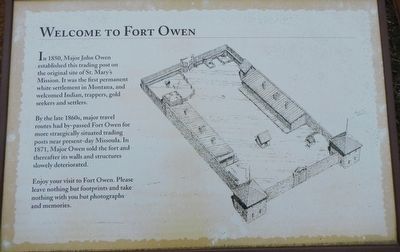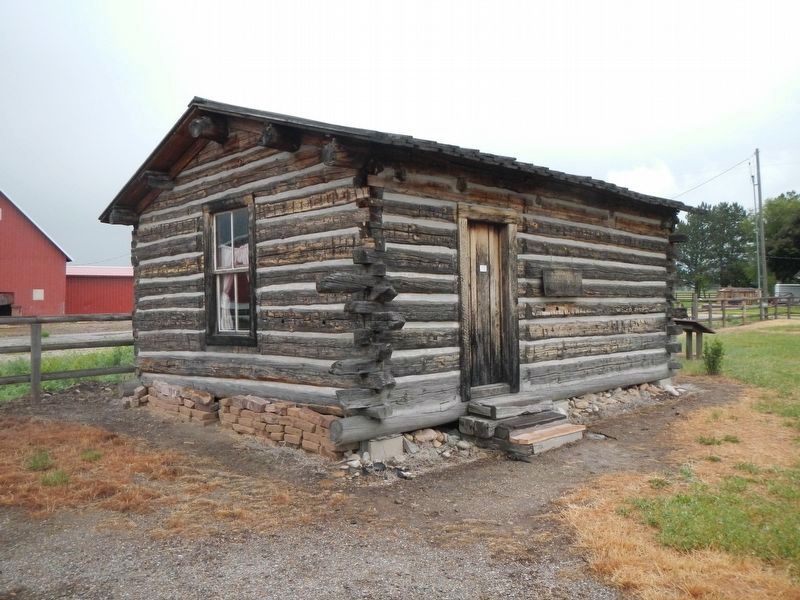Stevensville in Ravalli County, Montana — The American West (Mountains)
Welcome to Fort Owen
By the late 1860s, major travel routes had by-passed Fort Owen for more straegically (sic) situated trading posts near present-day Missoula. In 1871, Major Owen sold the fort and thereafter its walls and structures slowly deteriorated.
Enjoy you visit to Fort Owen. Pease leave nothing but footprints and take nothing with you but photographs and memories.
Erected by Montana State Parks.
Topics. This historical marker is listed in this topic list: Forts and Castles.
Location. 46° 31.176′ N, 114° 5.826′ W. Marker is in Stevensville, Montana, in Ravalli County. Marker is on Fort Owen Ranch Road near Stevi Cutoff Road (State Highway 269), on the left when traveling north. Touch for map. Marker is at or near this postal address: 99 Fort Owen Ranch Road, Stevensville MT 59870, United States of America. Touch for directions.
Other nearby markers. At least 8 other markers are within walking distance of this marker. Fort Owen State Monument (a few steps from this marker); Hunter Building (approx. 0.6 miles away); Gleason Building (approx. 0.6 miles away); IOOF Hall (approx. 0.7 miles away); Thorton Building (approx. 0.7 miles away); Henry Buck/Stevensville Trading Co (approx. 0.7 miles away); First State Bank Building (approx. 0.7 miles away); St. Mary's Mission Historic District (approx. 0.7 miles away). Touch for a list and map of all markers in Stevensville.
Also see . . . Fort Owen State Park -- Wikipedia. By 1850, hostility to the Catholic missionaries led to the closure of the original St. Mary's mission.... John Owen, a civilian sutler at Fort Hall in what is now southeastern Idaho, moved to the Bitterroot Valley and purchased the site of St. Mary's Mission for $250 This was the first recorded land transaction in Montana. Owen renamed the site Fort Owen after himself.[1] Owen and his wife Nancy, a full-blood Shoshone, managed the fort themselves and turned it into a highly popular trading post and rest stop for fur trappers, traders, missionaries, and explorers. (Submitted on September 19, 2018, by Barry Swackhamer of Brentwood, California.)
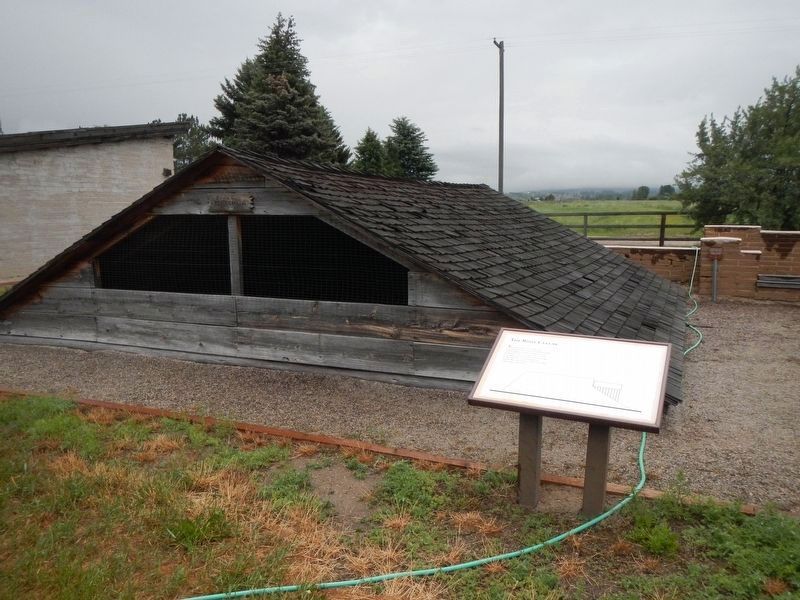
Photographed By Barry Swackhamer, May 11, 2018
3. The Root Cellar
The Fort Owen root cellar was completed in the autumn of 1860 during the last phase of adobe reconstruction of the Fort. The structure was covered with earth and was used for food storage. Today, only the stone foundations remain, Reconstruction of the root cellar is planned for the future.
(It appears to have been done!)
(It appears to have been done!)
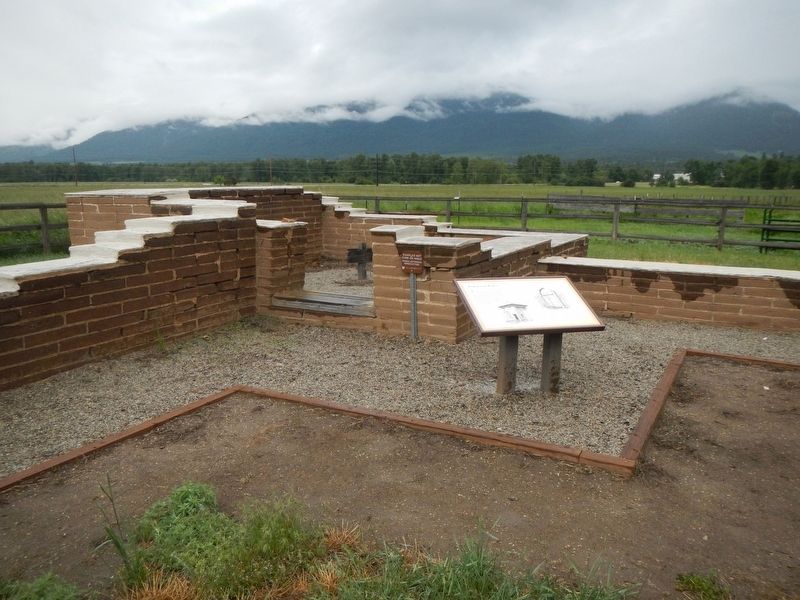
Photographed By Barry Swackhamer, May 11, 2018
4. Farm and Fort
The strong gates and two-story bastions of Fort Own present a formidable appearance to travelers in the Bitterroot Valley. Although equipped with loopholes for rifles, the bastions were never needed for defense. One bastion served as a granary and the other for storage, medical supples, and as a doctors office.
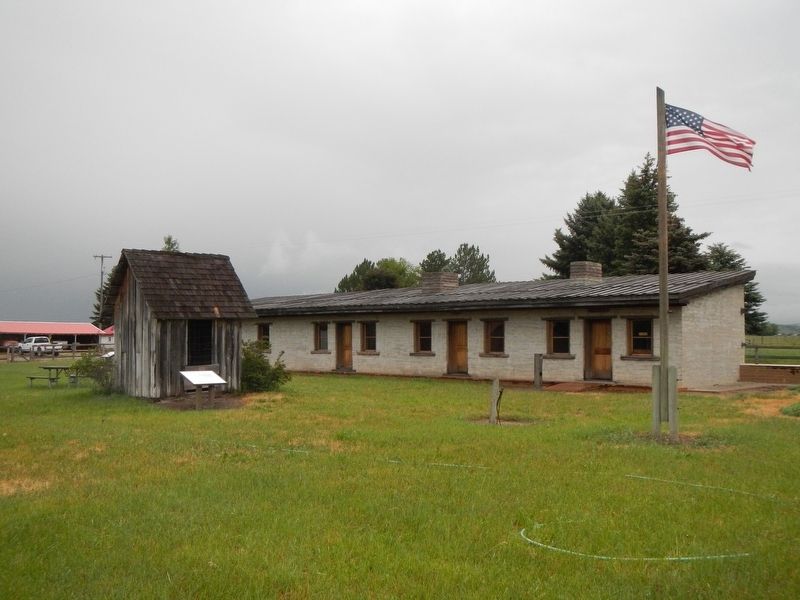
Photographed By Barry Swackhamer, May 11, 2018
5. West Barracks and Wellhouse
Originally rough log buildings surrounded by log palisades, Fort Owen was completely rebuilt with sun dried adobe bricks from 1857 to 1860. The west barracks was the first building completed and contained the Fort's kitchen, dining room, and all-important trade room. In 1889 the roof of this structure blew off during a violent wind storm, killing then owner Washington J. McCormick. The remaining walls posed a threat and were demolished a few years later.
The Fort Owen well house was completed in the autumn of 1860 during the final phase of adobe reconstruction of the Fort. The wellhouse covered a stone-lined well shaft from which water was drawn. The building was reconstructed in 1977 based on historic photographs and archaeological evidence.
The Fort Owen well house was completed in the autumn of 1860 during the final phase of adobe reconstruction of the Fort. The wellhouse covered a stone-lined well shaft from which water was drawn. The building was reconstructed in 1977 based on historic photographs and archaeological evidence.
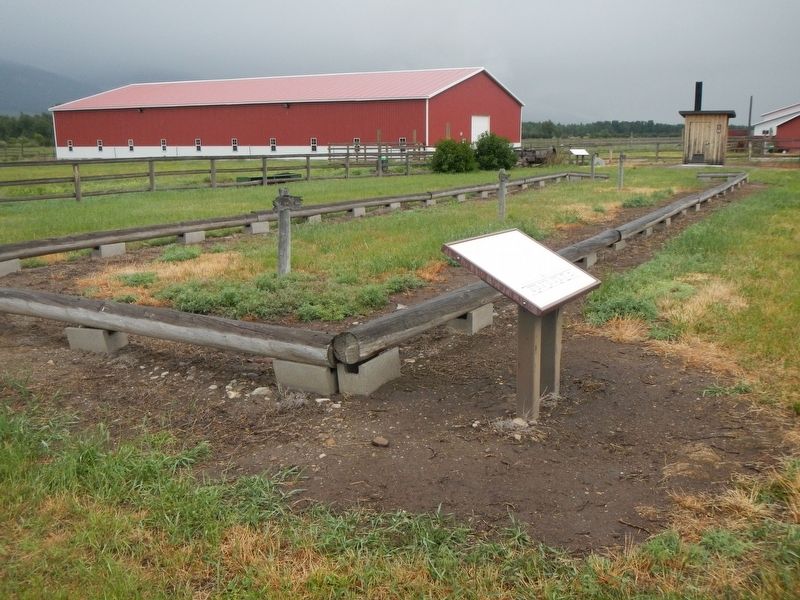
Photographed By Barry Swackhamer, May 11, 2018
6. The Fort Through Time
Archeological investigation at Fort Owen began in 1957. University of Montana students under the direction of history and archaeology professors continued the work to present-day, resulting in the location of numerous artifacts pertinent to the significance and development of life at Fort Owen through time. (Here, an in-progress dig attempt to discover and further verify knowledge regarding the Fort Owen community.
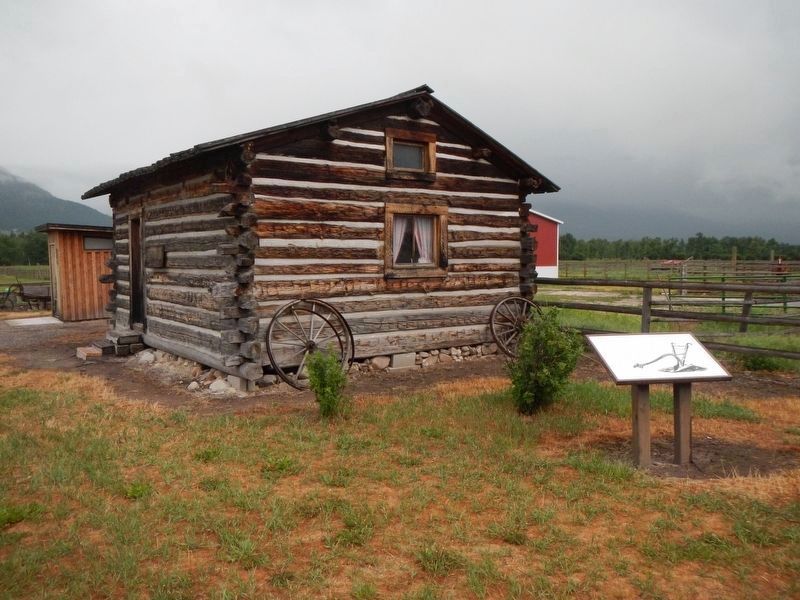
Photographed By Barry Swackhamer, May 11, 2018
7. Land Use
The land surrounding Fort Owen was first farmed in the 1840s by the Missionaries at St. Mary's Mission. Here the Jesuits cultivated Montana's first crop of wheat, oats and potatoes. During the 1850s and 1860s, Major Owen continued producing these crops, cut hay, and raised a wide variety of garden vegetables. The rich valley grasses provided excellent pasture for the Fort's horses, cattle, and other livestock.
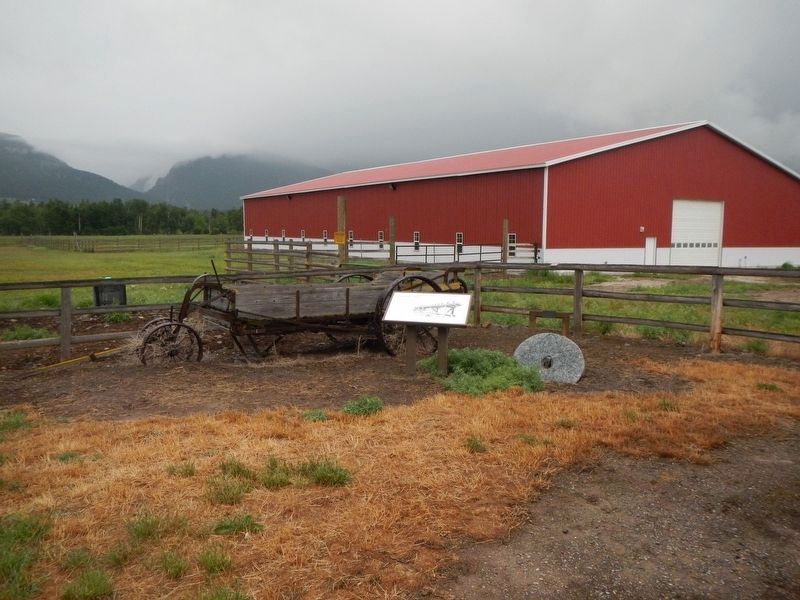
Photographed By Barry Swackhamer, May 11, 2018
9. Fort Owen Mills
Montana's first grist and saw mills were built on Mill Creek just northwest of Fort Owen and were included in the Mission sale. Owen hired David Pattee to rebuild both mills in 1857. In 1865, Owen completed a commercial grist mill to serve Montana's booming mining camps. This three0story mill was powered by and overshot wheel driven by water carried over a 750-foot flume.
Credits. This page was last revised on September 19, 2018. It was originally submitted on September 19, 2018, by Barry Swackhamer of Brentwood, California. This page has been viewed 216 times since then and 17 times this year. Photos: 1, 2, 3, 4, 5, 6, 7, 8, 9. submitted on September 19, 2018, by Barry Swackhamer of Brentwood, California.
